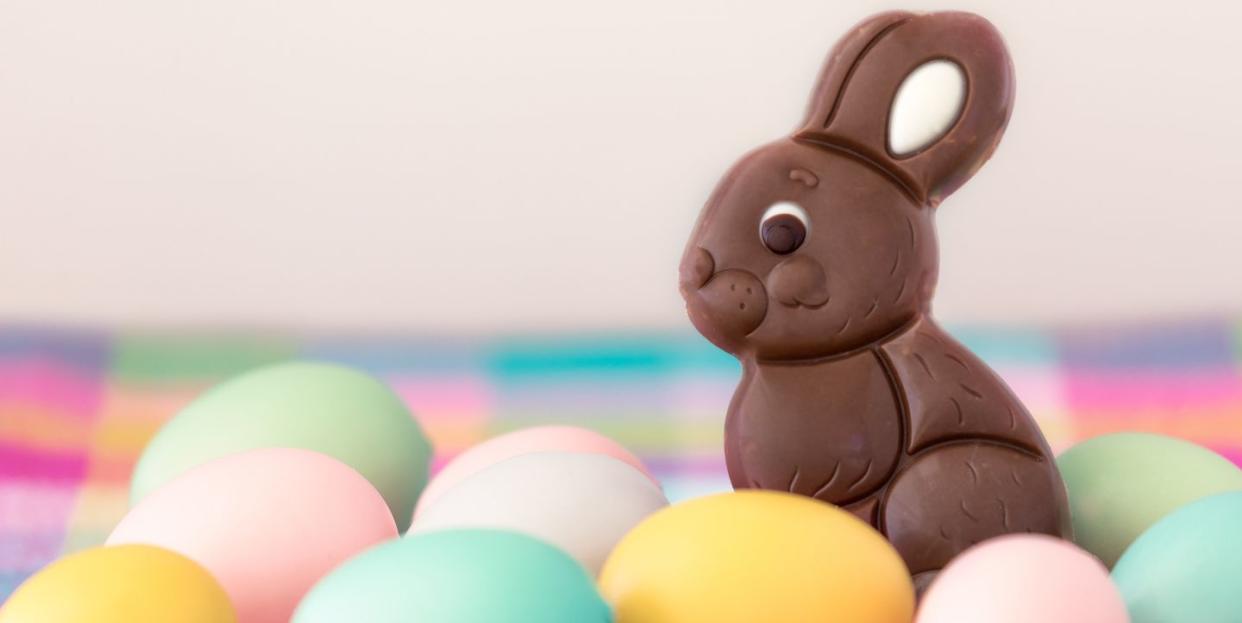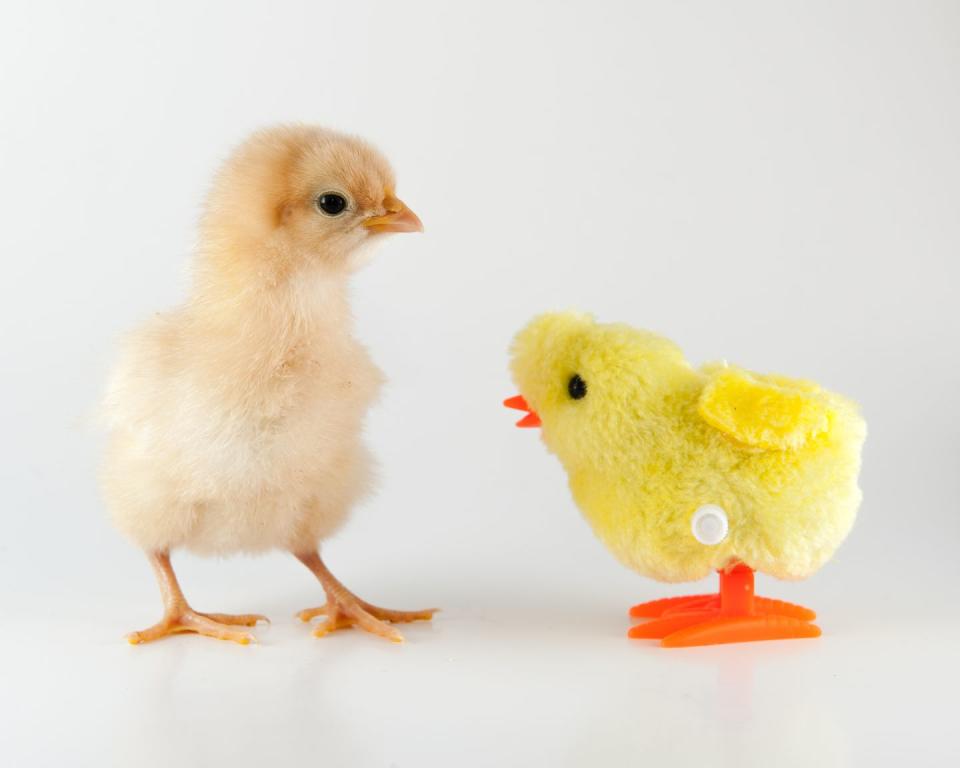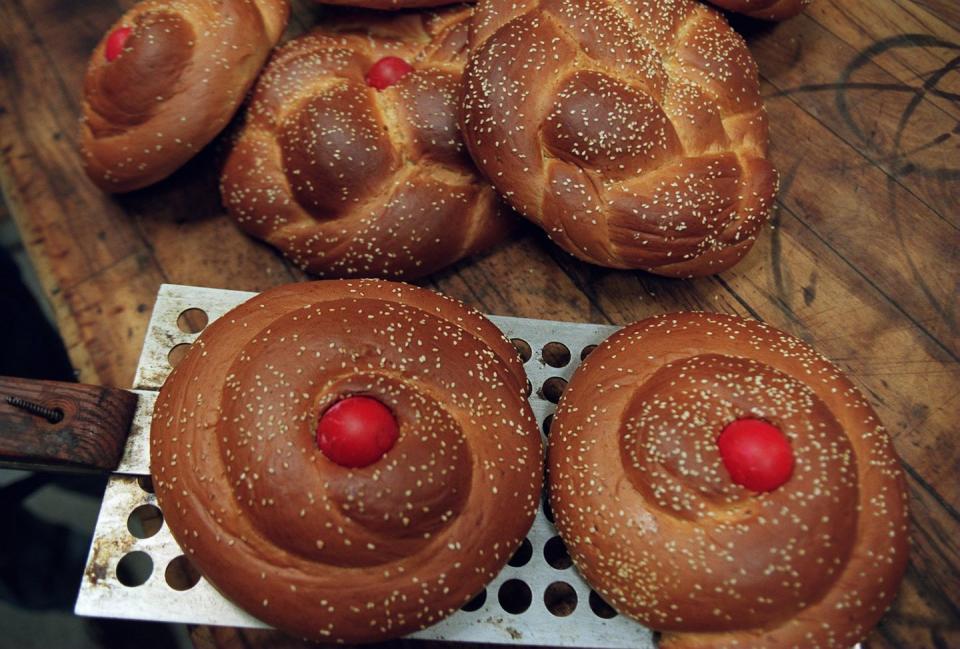All Those Easter Pastels Actually Have a Meaning

The Easter season is all about egg painting, spring-breezy Sunday dresses, and pastels, pastels, pastels. But the most popular candy hues in your Easter basket (and all over your bunny decorations) actually derive from the beliefs that are the reason for the season: The resurrection of Jesus Christ. Here are the real meanings behind the Easter colors we all know so well (plus two more "traditional" shades that may surprise you).
Easter's colors are the liturgical colors of the season.
A liturgy is "a rite or body of rites prescribed for public worship," and the colors we associate with particular Christian liturgies date back to medieval times (the Middle Ages period, not the joust-y dinner theater). According to Britannica, in 1198, Pope Innocent III established the color sequence the Roman Catholic church uses today when he released his De sacro altaris mysterio (the Mystery of the Sacred Altar).
Pope Innocent III outlined the symbolism of each color in his treatise, basing them on interpretations of colors and flowers in the Old Testament book Song of Solomon. The symbolic hues are traditionally apparent in Roman Catholic priests' vestments (the robes worn in a church service) and adopted across several other Christian denominations, including the Anglican and Lutheran churches. These include the colors we associate with Easter today.
White
In this context, white stands for light, purity, triumph, glory, and joy. For Christians, Christ's resurrection on the third day after his crucifixion is celebrated as a joyous event. In church, you may see a white cloth covering the altar, and you may be inspired to set out a crisp white tablecloth for Easter Sunday brunch, adorned with Easter lilies. It's also, of course, the iconic Easter bunny shade, and the color of an un-dyed egg.
Violet
The purple hue is associated with penance, humility, wisdom, melancholy, and it holds special significance in the 40-day period of Lent between Ash Wednesday and Easter, according to Britannica. It also symbolizes inward reflection, which is a big part of Lent for those who observe.
Green
Who knew that plastic Easter basket grass was so symbolic? Green signifies the Holy Ghost (one third of the Christian faith's Holy Trinity), hope, and life itself, as embodied in the budding greenery of spring blooms. It's also used in church vestments on the Day of the Epiphany.
Yellow / gold
Whether its regal gold or a more seasonally-appropriate pastel yellow, the shade represents joy, too. It is the color we associate with sunshine itself, along with sweet baby chicks.

Pink
Like white and yellow, the color of a gorgeous sunrise or a crackle-y candy shell also represents joy.
Red
Red is a symbol of martyrdom, the Passion of the Christ (the story of Jesus's arrest, trial, and crucifixion), and Christ's actual blood as it was shed on the cross.
You may not necessarily associate red with the holiday, as it's so...intense. But for people of Greek descent, the bright red egg at the center of a certain traditional treat may come to mind. As Vice explains, tsoureki is a sort of brioche bread that's flavored with a sweet spice called mahlepi and eaten at an Easter feast, the red egg calling to mind both the crucifixion and Christ's new life after resurrection.

Black
Finally, black is associated with mourning. That's why it's paired with Good Friday, which Christians observe as the day Jesus Christ died before his rebirth.
This one may be controversial, given its virtual absence in the typical Easter festivities—but there's always a few black jellybeans in the mix, right?
For more stories like this, sign up for our newsletter.

